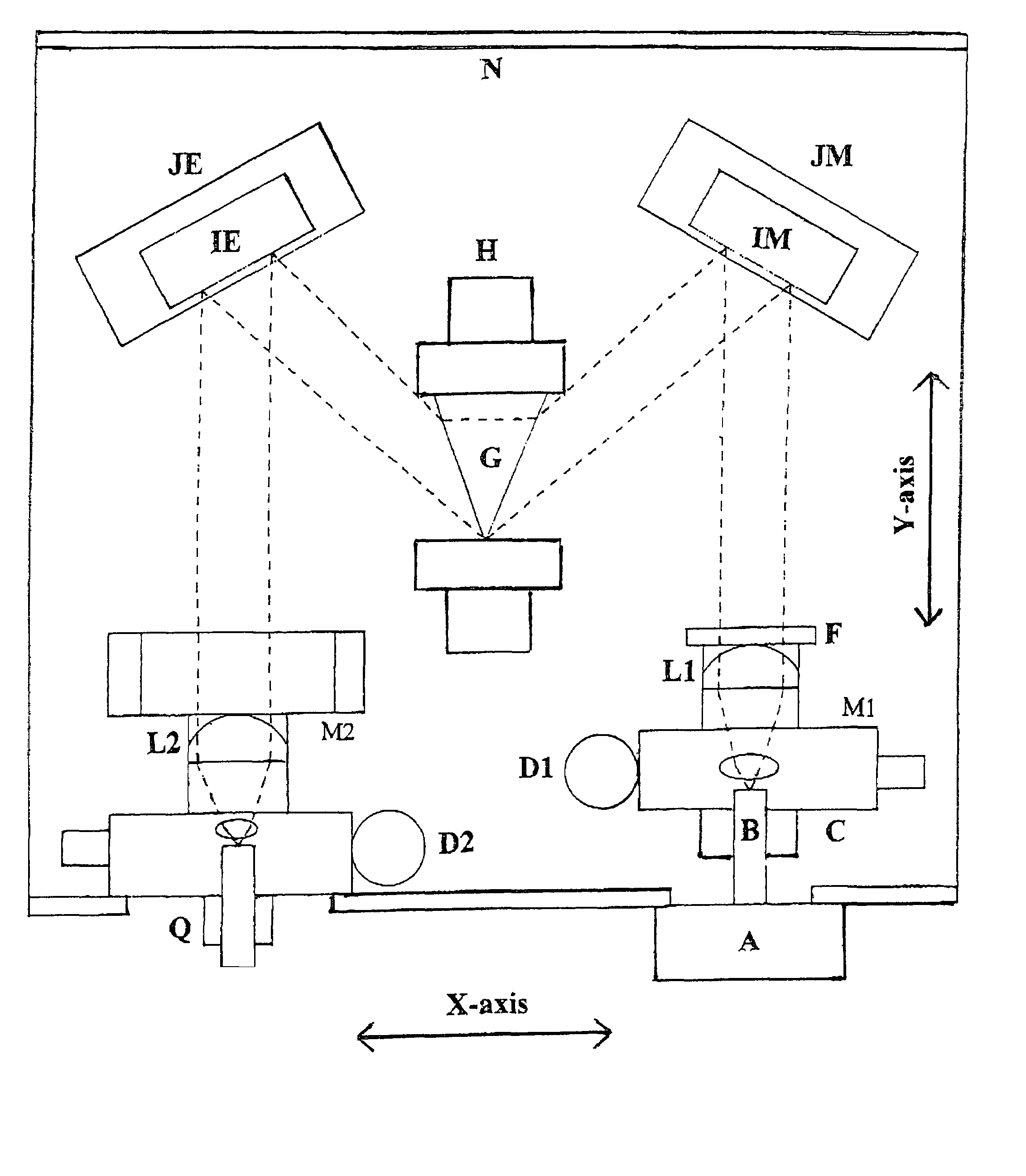Optical external cavities having brewster angle wedges
a technology of optical external cavity and wedge, which is applied in the field of optical and spectroscopy, can solve the problems of limiting several key applications of diode lasers, limiting the number of diode lasers in use, and the diode laser system has disadvantages relative to gas and other solid-state lasers. achieve the effect of reducing the size of external laser cavities, high efficiency and high efficiency
- Summary
- Abstract
- Description
- Claims
- Application Information
AI Technical Summary
Benefits of technology
Problems solved by technology
Method used
Image
Examples
Embodiment Construction
[0028]
TABLE IDescription of Optical Components Labeled on FIG. 1Optical Component, VendorDescription of FunctionA. Source & Sample cuvetteExcitation source, sample analyte, holderand holder World PrecisionAssembly permits fluorescence to escape.Instruments Coherent LaserB. Optional input fiber, ThorConnects Sample and collimator.LabsC. Mount of input fiber,Holds fiber assembly to lens mounting.Opto SigmaD1. Mounting tube for lensHolds collimator lens on Mounting M1.L1 Opto SigmaD2. Mounting tube for lensHolds camera lens on mounting M2.L2 Opto SigmaF. Fabry-Perot or FB etalonIsolates fluorescent light spatially andfilter CVI Laserspectrally at thirty times that of the wedge.G. The semiconductor wedgeDisperses fluorescence by 1 pixel / 10 cm-1Two-Six CorporationSeparates Fabry-Perot & Echelle Orders.H. Three axis rotation mountAdjusts incident angle of dispersedfor The Two-Six Wedge,spectrum Controls amount of spectralpart G. Opto Sigmadispersion Separates Echelle ordersby cross disper...
PUM
 Login to View More
Login to View More Abstract
Description
Claims
Application Information
 Login to View More
Login to View More - R&D
- Intellectual Property
- Life Sciences
- Materials
- Tech Scout
- Unparalleled Data Quality
- Higher Quality Content
- 60% Fewer Hallucinations
Browse by: Latest US Patents, China's latest patents, Technical Efficacy Thesaurus, Application Domain, Technology Topic, Popular Technical Reports.
© 2025 PatSnap. All rights reserved.Legal|Privacy policy|Modern Slavery Act Transparency Statement|Sitemap|About US| Contact US: help@patsnap.com


